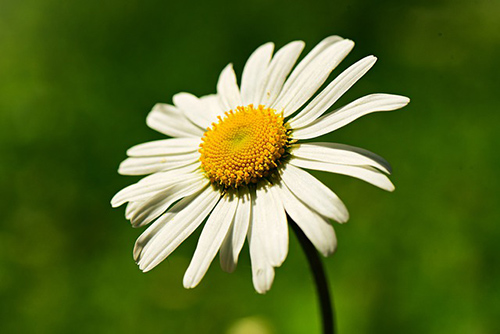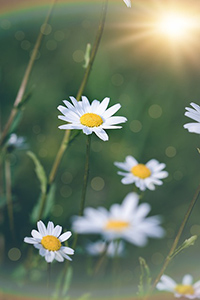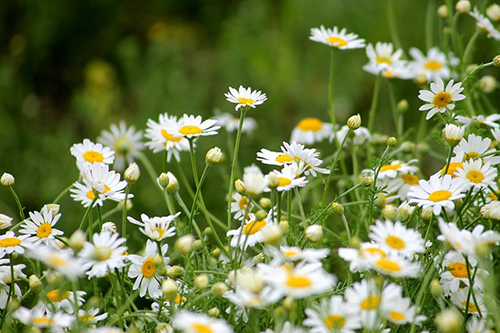Contents
The wild daisy flower is pretty but as tough and resilient as few plants are. When the weather is cold, rains, or snows, it bows down and closes itself. When the sun rises, the wild daisy opens up and says hello, following it across the sky. A wild daisy is a type of daisy smaller than the common one.
The Spring season invites us to eat tasty wild salads, which have depurative and stimulating properties. The somewhat sweet leaves of wild daisies are a perfect combination with those of sorrel (bitter) and dandelion (bitter)—a wonderful symphony of natural flavors! Next time you go to the countryside in springtime, enjoy it by serving yourself a tasty and healthy wild salad a la carte.
Could anyone have told you that this humble plant made the German government go angry? German rulers demanded it be exterminated by the late 18th century because they accused the plant of provoking abortions. That accusation has never been proven.
Wild Daisy Flower Scientific Facts

- Other names: Bellflower, daisy.
- French: Paquerette, petiete marguerite.
- Spanish: Bellorita, margarita comun.
- Environment: Native to central Europe, it has spread everywhere. It also grows in America, especially in northern areas, meadows, and grasslands.
- Description: This is a plant of the Compositae family, usually growing between 10 and 15 cm high. Its broad leaves form a rose at the base of the plant. The flowers have a yellow disc and white or pink petals.
- Part of the plant used medicinally: The flowers and the leaves.

Healing Properties and Indications
The active medicinal components of wild daisy flowers and leaves are most concentrated: saponins, tannins, organic acids (malic, tartaric, acetic, oxalic, etc.), mineral salts, inulin, and essential oil.
From the Renaissance onwards, many properties have been attributed to the wild daisy flower, but according to its composition, the main ones are:
- Depurative, laxative, and mildly diuretic.
- Sudorific, febrifuge (decreases fever), and expectorant.
- Invigorator and appetizer (increases appetite).
- Vulnerary (heals wounds and heals bruises) when externally applied.
The use of wild daisy flowers and leaves is recommended in the following cases:

- Fever and infectious diseases (influenza, bronchitis, catarrh, measles, scarlet fever, parotitis, etc.). It promotes eliminating toxins and metabolic waste produced by infection (through urine and sweat) and invigorates the body, shortening its recovery period. Moreover, it decreases fever and helps expectoration. We recommend compressing the forehead with a decoction of flowers and leaves and taking it orally for high fever.
- Traumas, bruises, sprains, furuncles, sores, and, as a rule, any skin or soft tissue lesion requiring an anti-inflammatory and cicatrizant (wound healing) action.
How to use Wild Daisy
- As a vegetable, particularly raw, in salads and other dishes.
- Infusion with a large spoonful of flowers and/or leaves per cup of water. Drink two or three cups daily.
- Compresses soaked in a decoction made with 50-60 g of flowers and/or leaves per liter of water. Boil for two minutes, then steep for 15 minutes before straining. Apply the compresses on the affected skin area, changing them every hour.
DISCLAIMER: All content on this website is presented solely for educational and informational objectives. Do not rely on the information provided as a replacement for advice, diagnosis, or treatment from a qualified medical expert. If you are pregnant, nursing, or have any preexisting medical concerns, talk to your doctor before using any herbal or natural medicines.
REFERENCES
- George D. Pamplona-Roger, M.D. “Encyclopedia of Medicinal Plants.” George D. Pamplona-Roger, M.D. Encyclopedia of Medicinal Plants. Ed. Francesc X. Gelabert. vols. 2 San Fernando de Henares: Editorial Safeliz, 2000. 744, 745. Print. [wild daisy leaves]
- National Institutes of Health: https://pubmed.ncbi.nlm.nih.gov/22828912/
